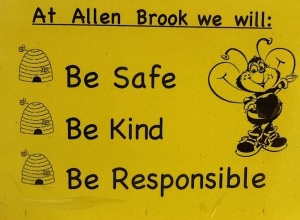The prompt for today’s blogging challenge is to write about a piece of technology I’m hoping to incorporate into my curriculum. I’m not a classroom teacher and don’t have a curriculum to follow, so I’m going to adapt this post.
 This year, we are venturing down the road toward our first 1:1 pilot, with Chromebooks. We had attempted a year and a half ago, to get funding for a 1:1 iPad initiative. That failed to pass muster and we learned a lot of lessons from the experience. Since then, we also learned about how challenging it is to share iPads!
This year, we are venturing down the road toward our first 1:1 pilot, with Chromebooks. We had attempted a year and a half ago, to get funding for a 1:1 iPad initiative. That failed to pass muster and we learned a lot of lessons from the experience. Since then, we also learned about how challenging it is to share iPads!
A year passed and Chromebooks emerged on the horizon. We found a way to fund a pilot for this device with a small sampling of our school population. We determined that we could provide Chromebooks for two teams in our school. Our teams are made up of 4 teachers that work collaboratively, with 4 classes of students that move about within the space for various aspects of their day.
All teams in grades 3-8 were invited to submit a proposal, and then had to meet with myself and our administrator to defend why they should be the chosen ones. We had five teams apply and sadly could only pick two. One team selected is composed of third and fourth graders in multi-age classes, the other grades 5-8.
We’re almost ready to hand them out to students. Over the course of this year, we will be looking to see how having a device for each student impacts, enhances, and enriches learning. If access to technology when you need it is not an issue, how does that free up time and affect planning? How will transitioning full-speed ahead to using Google apps play out and transform what happens in these classrooms?
As the Chromebooks get distributed and students get underway with Digital Citizenship activities to begin their work, (thanks to Common Sense Media), we’ll be on our way. I’ll be sharing the ups and downs here on this blog.
Image: creative commons licensed (BY-SA) flickr photo by Unhindered by Talent: http://flickr.com/photos/nicmcphee/573255385





